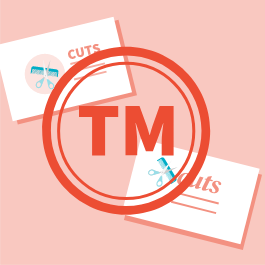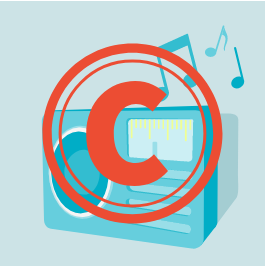Intellectual Property Rights for Small Businesses

All businesses start with bright ideas, but it's what you do with them that dictates your successes.
When it comes to your own business's success story, it pays to safeguard your big ideas by getting intellectual property rights in place.
Incorporating patents, copyright, design rights and trademarks, investing in intellectual property rights can not only prevent your rivals from running off with your latest brain waves, it can put your business in a better position for investment, collaboration and expansion in the future.
Got a novel idea in the pipeline that you think your customers will love? Read AXA's guide to intellectual property rights for small businesses to learn how to protect your moments of genius from ideation to fruition and beyond.
What is intellectual property?
Intellectual property refers to something that is created using human intellect. These non-physical assets include imagery, literary and artistic work, the design or looks of your product, names, symbols and other items created by, and unique to, your business.
For example, simply having an idea for a new app doesn't mean it's intellectual property. Rather, the app's design, prototypes and app itself would be classified as intellectual property assets.
Businesses go out of their way to make sure their physical assets, like stock and equipment are protected. When it comes to your intangible assets, like your ideas and designs, they can be much trickier to keep secure.
Intellectual property is in place to ensure that ownership rights are recognised and there is control over how assets are used. Intellectual property rights allow owners to make money from the intellectual property they own.
You own intellectual property if you either created the asset in question, bought intellectual property rights from the creator or previous owner, or if you have a trade mark.
If you're self-employed, you'll own the intellectual property of what you create even if your work was commissioned by someone else – unless your contract with them gives them the rights.
You won't own the intellectual property for something you've created as part of your employment with someone else. Intellectual property can also have numerous owners, be sold or transferred or belong to one or more businesses at once.
Small businesses should consider how to secure their intellectual property from day one to prevent rivals from cashing in on their fresh perspective.
Why do I need to protect my intellectual property?
When you introduce your latest ‘a-ha’ moment to the outside world, there's always a risk that it could be copied or stolen by other businesses. Your intellectual property belongs to you, so you should know how it's controlled, used and in what situations.
If your business is centred around your intellectual property and someone steals your idea, this could put your business at risk of losing the market share and put a dampener on the profits you've worked so hard to achieve.
Having intellectual property in place for your business makes it easier to take legal action if someone tries to copy your work. Registering your intellectual property can protect your investment, futureproof your business and give you it extra credibility.
And even if your business isn't centred around a unique idea, it's a good idea to be up to speed on intellectual property law to make sure that you're not accidentally infringing on someone else's work.
What intellectual property do I need?
The type of intellectual property protection you need depends entirely on the assets that you're trying to protect. For the majority of small businesses, the intellectual property types that should be on your radar are: trade secrets, patents, design rights, trademarks, and copyright.
Here are some of the main categories of intellectual property that you can use to protect your business.

Trademarks
What is a trademark?
From Nike's swoosh and Homer Simpson's “D'oh”, to McDonald's golden arches and the hum of a lightsaber, each of these instantly recognisable trademarks are under the full force of intellectual property law.
Having a trademark is an easy way for customers to instantly recognise your business. It gives owners the exclusive right to use the trademark – whether it's a logo, a business name, a jingle or a product name – in the services and situations to which it's applied.
Protecting a business name or registering a domain name to reserve the website address you want tends to be top at the top of your list of priorities when it comes to sorting out your intellectual property. Thankfully, registering for a trademark is super simple.
How do I register for a trademark?
When you're starting out in business and are looking to protect your brand, applying for a trademark is the logical first step to take. The simplest way to protect a trademark is by registering it with the UK Intellectual Property Office.
Before registering your trademark, you need to ensure that it's distinctive to anything out there. Check the trademarks database to check if a similar trademark to your brand already exists and, if so, who owns it. You can also check the Intellectual Property Office's online journal to find out about trademark applications accepted within the past week to ensure that you're not stepping on anyone's toes.
Got a completely original idea? Below are the three simple steps you need to take to register a trademark.

1. Check if your brand qualifies as a trademark
Your trademarks can include a combination of:
- Words
- Sounds
- Logos
- Colours
It can't, however:
- Be offensive
- Describe the goods or services it relates to (for example, the word kitchen can't be a trademark for a kitchen fitting company)
- Be misleading (for example, claiming your products are eco-friendly when they're not)
- Be a 3-dimensional shape associated with your trademark (for example, use the shape of an egg for eggs)
- Be too common and non-distinctive (for example, a simple statement like 'be the winner')
- Look too similar to state flags or hallmarks in line with the World Intellectual Property Organisation guidelines

2. Apply to register your trademark
When it comes to applying for your trademark, you need to have the following details at hand:
- Details of what you want to register (for example, a word document, illustration or slogan)
- The trademark classes you want to register in. Intellectual Property Offices worldwide use a trade mark classification system that groups together similar goods or services into 45 different classes. Good are listed in classes 1 to 34 and services are listed in classes 35 to 45.
You can use the Right Start service to check your application meets the trademark registration rules. You'll pay £100 initially, plus £50 for each additional class. You'll then get a report letting you know if your application meets the rules.
Here's the costs to consider when registering your trademark:
| Trademark application fees | ||
|---|---|---|
| Type of application | Fee | Each additional class |
| Paper forms | £200 | £50 |
| Standard (online) | £170 | £50 |
| Right Start (online) | £200 (£100 up front plus £100 if you go ahead with your registration) | £50 (£25 up front plus £25 if you go ahead with your registration) |
You can also choose to continue your application even if it doesn't meet the rules for registration.
If you haven't applied before, read the guide to new applications to make sure you get off on the right foot.

3. Respond to any objections
After you apply you'll get feedback on your application within 20 days. You'll then have two months to resolve any problems they've outlined.
During this time, anyone can oppose your trademark application. You can choose to either withdraw your application, get in contact with the individual making the opposition or defend your application. Click here for more information on how to handle a trademark dispute.
If an examiner doesn't have any objections, your application will be published in the trademarks journal for two months. Registering a trademark takes about four months if no parties object.
What happens once I've registered for a trademark?
Once you've registered a trademark, you can put the trademark ‘TM’ symbol next to your protected intellectual property to prevent opportunistic imitators from pinching it. And for extra proof, you can also direct those querying your trademark to the listed registration on the trademarks database.
You need to report any changes to your name, address or email address and if you think someone's idea is too similar to yours, you can object to their trademarks. Also, you can sell, market, licence and market your trademark.
Once completed, it will last for ten years and you can renew it after that time.

Patents
What is a patent?
Got an original invention that you're bursting to take to market? Having a patent in place means you can take legal action against anyone who creates, sells, uses or imports your invention without getting your permission.
Not only this, if you successfully obtain a UK patent, you have exclusive usage rights on your creation for up to 20 years.

In order to be granted for a patent your inventions must be all of the following:
- A completely new product or method of achieving specific results (check for similar inventions by searching published patents)
- Have commercial or industrial use
- Inventive (not just a modification to something that already exists)

However, there are some inventions that you can't patent. This includes:
- Literary, dramatic, musical or artistic works
- A way of carrying out business, playing a game or thinking
- Medical treatment or diagnosis methods
- Certain computer programs or mobile apps
Patents provide the most protection for your intellectual property and not only can they keep your invention safe against competitors, having one in place could prove attractive to investors and licensers.
How do I apply for a patent?
You should get a patent attorney or advisor to help you prepare your application and to make your patent as commercially appealing as possible.
There are eight steps when applying for patent protection in the UK through the Intellectual Property Office:
1. Check for similar patents
You can search for published patent applications and registered patents using the Intellectual Property Office's patent information and document service and patent publication service.
2. Create your patent application
This must include a description of your invention that allows others to see how it works and can be used, legal statements setting out the technical features of your invention and a summary of all of its important aspects. For more info on patent applications, click here.
3. File your patent application
Once you've got your patent application up to scratch, you'll need to file a UK patent application with the Intellectual Property office by submitting it online or by post. For information of application fees, click here. You'll get a receipt with your application number and filing date and you can mark you invention as 'patent pending'.
4. Get your search report
You'll receive this up to six months after submitting your patent application. The feedback will help you weigh up whether or not it's worth continuing with your patent application.
5. Your application will be published
Your patent application will be published 18 months after filing it.
6. Request a substantive examination
The examination deems whether or not your creation is inventive enough and checks that your description and claims are worthy of a patent. You need to request this examination within six months of your application being published. Find out more here.
7. Respond to your substantive examination
You'll need to respond to any feedback the Intellectual Property Office have on your patent application in case you need to amend or change it in line with their feedback. Be aware that the examination process can take place years after initially filing your application.
8. Decision time
Successfully got your invention patented? Congratulations! Your patent application will be published in its final form and you'll be sent a patent certificate as proof of your patent. You'll also be responsible for renewing and defending your patent too. Click here for more information on patent application decisions.
Is getting a patent right for my business?
Patents can be expensive and tricky to secure. In fact, only 1 in 20 applicants get a patent without professional help. And given that the process can take up to five years to complete and typically costs around £4000, you need to make sure you're taking the right step.
If you're unsure what route to take, consider speaking to a patent attorney, heading to an intellectual property clinic or going to the British Library Business and IP centre for advice.
Keep in mind that you shouldn't talk to other people about your invention without having a non-disclosure agreement in place. If you do, you may not be able to patent your invention.

Design Rights
What are design rights?
Arguably one of the first things that comes to mind when you think of the Coca-Cola brand is its iconic glass bottles.
The shape, look and feel of these bottles are so intrinsically linked with the Coca Cola brand identity, which is why the company has decided to protect its intellectual property by securing the design rights of it.
In a nutshell, registered design rights are exclusive rights that can stop someone from copying the appearance and shape of your creations as their own. They tend to operate in tandem with trademarks and patents when protecting the intellectual property of a design.
Design rights apply to the shape, construction and configuration of your creations and they apply to two-dimensional drawings, such as graphics, textiles and wallpaper, as well as 3D designs too.
What's the difference between unregistered and registered design rights?

Unregistered design rights
Unregistered design rights safeguard the shape, construction and design of your marketable product and are put in place to prevent against unauthorised copying of your intellectual property.
Unregistered design rights are automatic and can be registered with the Intellectual Property Office UK Copyright Service to establish proof of the date and content of the work in case of any later dispute or legal claims.
In the UK, unregistered design rights last up to ten years from the end of the calendar year when the design was first made into a marketable product.

Registered design rights
Registered design rights can provide extra cover in addition to any design right or copyright protection that already exists for a design.
Regulated by the Intellectual Property Office, registered design rights offer up to 25 years’ protection in the UK. Keep in mind that it's only available in the countries or territories where was the application was made.
Registered design right provides protection for up to 25 years and can be registered in the UK by application to UK Intellectual Property Office and in the EU by application to the European Intellectual Property Office.
How do I register for a design right?
You'll need to have proof of when you created a design when it comes to claiming design rights over it. This could be something as simple photos of prototypes or copies of design drawings signed and dated by a solicitor or intellectual property lawyer.
Design registration doesn't just protect you against another party copying your creations – it also safeguards against anyone who goes on to develop a product which infringes on your original idea.
Got a trailblazing design that you want to secure the design rights of before taking it to market? Find out more about how to register your design here.
It's your responsibility to protect your copyrighted work against other people infringing on it. If you believe someone is stepping on the toes of your copyrighted work, you should get in touch with the Copyright Tribunal to help you raise a dispute.

Copyright
What is copyright?
Copyright safeguards your work and deters others from using it without acquiring your permission. Having copyright in place can prevent people from not only copying your work but also from distributing your work (free or otherwise), renting, lending or adapting it and uploading it to the internet.
Copyright is centred on protecting your artistic intellectual property, including:
- Original literary, dramatic, illustration and photography work
- Software, web content and databases
- Sound, music, film and TV recordings
- Broadcasts
- The layout of published editions of written, dramatic and musical works
Unlike other forms of intellectual property protection, you get copyright protection automatically – meaning there's no need to apply or pay a fee for it.
The first owner of a copyright will be the author who created the work. Although an employer tends to be the first owner of a copyright if the item of work in question was made by an employee as part of their working contract.
How can I protect my copyright works?
It's your responsibility to protect your copyrighted work against other people infringing on it.
In order to copyright your work, all you have to do is mark your work with the copyright symbol (©), your name and the year your work is created.
You would then need to establish a copy of your work to prove the date of creation and ownership, which can be done easily by leaving a signed and dated record of your work (including plans, drafts or illustrations) with your solicitor.
Choosing to mark your work or not doesn't impact the level of copyright protection you'll have.
If you believe someone is stepping on the toes of your copyrighted work, you should get in touch with the Copyright Tribunal or seek advice from an intellectual property professional to help you raise a dispute.
How long does copyright last?
Copyright protection is in place as soon as you create your work. However, the length of time which a copyright lasts depends on the type of work you create.
Below, we've outlined how long copyright lasts for different types of creative work.
| Type of work | How long copyright usually lasts |
| Written, dramatic, musical and artistic work | 70 years after the author’s death |
| Sound and music recording | 70 years from when it’s first published |
| Films | 70 years after the death of the director, screenplay author and composer |
| Broadcasts | 50 years from when it’s first broadcast |
| Layout of published editions of written, dramatic or musical works | 25 years from when it’s first published |
If you spot that you’ve been ripped off, a strongly worded letter from a solicitor is often all that is needed to cause them to cease and desist; never underestimate the power of a few well-chosen words. Failing this, court proceedings are the ultimate remedy.
Can I licence my copyright?
If you own the copyright for your creations you can choose to licence your work by registering your work with a licensing body.
This will give you more control of how your work is used and will set in stone how royalties will be paid to you if your work is used by other parties.
As a copyright owner you can choose to keep or waive your moral rights, which includes the right to be identified as the author of a piece of work, object to how it's being used or if there are any changes or amendments made to it without your permission.
Be aware
Keep in mind that all intellectual property rights are territorial. This means that if you have UK-specific intellectual property protection in place, it won't extend to markets worldwide.
Securing worldwide protection for your business's intellectual property can be super pricey, so it's best to be strategic with your intellectual property protection investment and ensure you've got the right ones in place where you manufacture and practice in the most.

Got some big ideas to peddle? Whether it's a brand spanking new product or a novel method of manufacturing, don't miss the boat when it comes to securing the intellectual property you've invested your blood, sweat and tears into.
In the end, the best way to protect your intellectual property depends entirely on the nature of your business. Whatever you do, make sure you put in the time to research what's out there and gather information before getting the advice of an intellectual property professional to ensure the fruits of your labour remain under your control.
Your business might be small at the moment but protecting the ideas that separate you from the pack is a sure-fire way to help it grow.
All businesses start with a single idea. Protect yours with AXA.
From that first lightbulb moment idea to bagging your first customer, running a business is jampacked with monumental moments. Protect each and every one of your big business ideas with business insurance from AXA.
Get a business insurance quote today